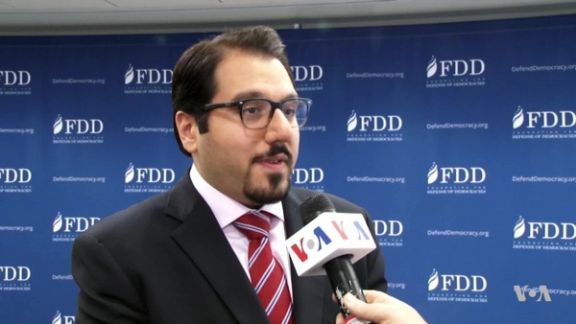UN Bans On Iran End, Setting Stage For Missiles Proliferation

The UN has sent letters to countries announcing end of bans on Iran’s missile program, removing barriers for the clerical regime to sell dangerous technologies.

The UN has sent letters to countries announcing end of bans on Iran’s missile program, removing barriers for the clerical regime to sell dangerous technologies.
“The Secretariat removed on 19 October 2023 from the Security Council website the list of 23 individuals and 61 entities subject to the aforementioned restrictive measures,” read the UN letter, terminating all provisions of Annex B of UN Security Council Resolution 2231 that prohibited activities such as development, tests, military employment, and others. The resolution endorsed Iran’s 2015 nuclear deal (JCPOA) with P5+1 (the five permanent members of the Council -- China, France, Russia, United Kingdom, United States, plus Germany).
“All it takes is one letter” to the UN Security Council by parties of the JCPOA to keep checks and balances on Iran’s drones and missiles, Behnam Ben Taleblu, a senior fellow at US-based think-tank the Foundation for Defense of Democracies (FDD) tells Iran International.
The hypothetical letter would start a 30-day clock for a different party to put forward a resolution to prove Iran’s compliance with the defunct deal signed with P5+1 (the five permanent members of the Council -- China, France, Russia, United Kingdom, United States, plus Germany). If the evidence for Iran’s non-compliance is clear, a snapback mechanism would crumble the foundations of UNSCR 2231 resolution, practically end the JCPOA and restore six resolutions imposed on Iran from 2006 to 2010 as well as all their prohibitions and penalties.
The US and nearly 50 other countries dusted off a 20-year-old program on weapons of mass destruction as well as issuing further missiles-related sanctions on Iran and the three European parties of the JCPOA, the so-called E3, announced in September that they would keep their sanctions in place. But no letter for a snapback.

Taleblu says unless Iran starts stockpiling weapons-grade uranium, these countries will not pursue a snapback mechanism. “Despite the recently lapsed UN prohibitions on Iranian missile testing and transfers, snapback still remains an option and should be considered an option. Legally under UN Security Council resolution 2231, snapback will remain an option until the fall of 2025. That means that the US or the E3 can still snap back and restore older multilateral penalties on Iran’s nuclear, missile and military program. And yes, all it takes is a letter from one of these JCPOA participants to the president of the UN Secretary Council and to run a 30-day clock,” Taleblu added.
On the Termination Day of the JCPOA, which will occur 10 years after Adoption Day (i.e. in 2025), the remaining EU measures will be terminated, the UNSC will conclude consideration of the Iran nuclear issue and UNSC resolution 2231 (2015) will be terminated.
Now that the prohibitions are lifted, Iran can now make money legally from its missile and drone sales and then can use the profits to finance its militant and terror proxies in the Middle East. The more chaos and destruction across Eurasia and perhaps Africa, the more Iran can find markets for its products. It can look for new buyers, who no longer face international consequences for their arms trade with Iran.
According to Taleblu, one of the more imminent perils is Iran selling ballistic missiles and related long-range strike technologies to Russia. Tehran has been providing President Vladimir Putin with a platter of miscellaneous drones, but not ballistic missiles. Russia has grown close to Iran since invading Ukraine in February 2022 and would likely use the easier flow of missiles to facilitate its invasion. Many of the hundreds of one-way attack drones it has used to bomb Ukraine in the last year were Iranian made.
“It is absolutely true that Iran did violate even arms transfer prohibitions prior to them expiring in 2020, however, thus far Iran has not given ballistic missiles to Russia,” he said, arguing that Iran waited for these US measures to end so that it can trade its missiles in broad daylight.“It is my contention that Iran was waiting for these international prohibitions to lapse to more seriously consider supplying Russia with ballistic missiles. Iran wants some of its arms transfers to not be penalized by the West and considered legal,” Taleblu said.
In addition to Russia, Iran will try to sell its missiles and drones to all its anti-West allies. Taleblu believes Iran’s leftist allies in the Americas as well as new Asian markets may be the prospective destinations of Iran’s drones and missiles.
In terms of customers for Iran’s long-range missiles or drones, “Venezuela is a growing industry.” He added that Bolivia is also a potential buyer while Belarus also offers a possible niche market. “The most acute and the most dangerous” remains the sale of Iran’s close-range ballistic missiles to Russia to help the invasion of Ukraine. “That will be a game changer and a record breaker for the history of Iranian arms proliferation as well as a game changer in the Russo-Iranian relationship.”
“The Islamic republic is an ideological actor committed to the export of the revolution, committed to keep developing a nuclear weapon, committed to protecting and defending its proxies and partners through illicit arms exports. This is a fact. Legal, political, normative and international prohibitions can hinder or name and shame it, but there is no such thing as a magic bullet.”
“Snapback matters because it sets a multilateral and international legal baseline for pressure against Iran.”